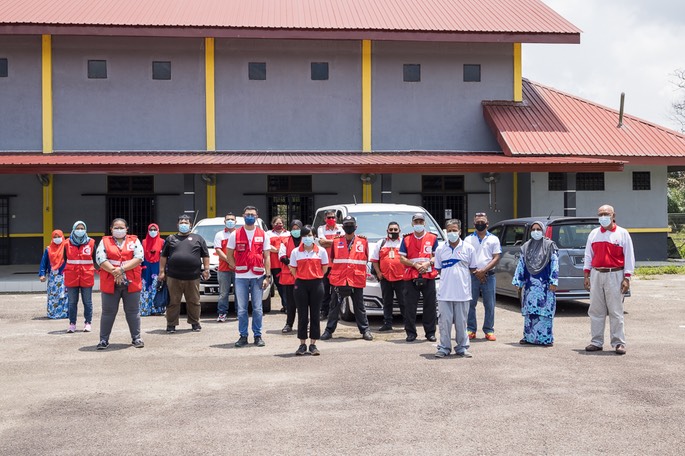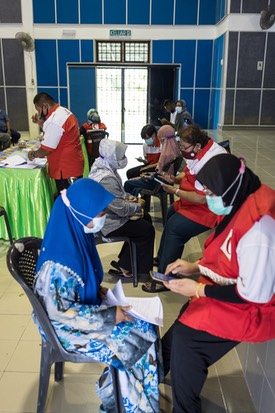
When disasters strike, the Malaysian Red Crescent (MRC) are always quick off the mark to provide emergency help to those in need. I have been travelling with members of the Committee for Community Services & Health, MRC, for the last two years and floods seem to be the principle recurring natural disaster. Unfortunately, areas unaffected by floods in the past are now susceptible, and areas used to floods are getting more serious flooding than before. In rural communities, school buildings or village halls serve as evaquation centres where people can go for shelter (click here for links to previous reports on flood relief).
The MRC helps provide these centres with food, hygiene kits, and emergency clothing. It is your donations which help the MRC with their work, along with funding from the IFRC (International Federation of Red Cross and Red Crescent Societies) which also derives from private donations. As such, they need to make sure the money is spent wisely and efficiently.

This year, the IFRC was trying a new approach by providing cash and vouchers to some of those affected by the floods, on the basis that the people themselves would best know what they needed. So today, members of the IFRC, based in Kuala Lumpur, joined with local members of the MRC to perform a ‘Post Distribution Monitoring’ survey.
Our destination was Kampung Contoh Kahang, north of Kluang, and more than two hours drive from Johor Bahru. The villagers were waiting for us in their community hall and were keen to provide feedback on their experiences following the floods this January.



Written questionannaires had been provided for the villagers and their responses were recorded digitally by the IFRC and MRC staff and volunteers. This was a very thorough process, made slightly more difficult than usual by the need for everyone to wear masks. I never realised how much I depended on lip-reading to hear people until that option was no longer available!
One villager asked if we would like to visit her house (see photo below) which was near the community centre, and we gladly took up her offer. Back in January, the water level in her house was about six feet deep, destroying all her belongings. She had recently moved here with her children to escape an abusive husband, so to see her rebuilt life disappearing must have been very upsetting. I waited outside while she was being interviewed, but I could hear her crying while recounting the events. She said that the other villagers had come to help her and she was very grateful for all the help she received.




You can see that, while her home is a modest fragile structure, she has adorned it with plants hanging from the rafters and lining the solid floor area. And at the front of her house were some rose bushes; a rare sight in Johor. I love to see colourful flowers in the otherwise relentless green of palm oil plantations which cover so much of the countryisde of Johor.
As we left to walk back to the community hall, the interviewers were clearly affected by the emotions displayed during the interview. I am pretty sure it is these personal interactions which inspire the good people of the IFRC and MRC in their work. The IFRC team will be visiting other States in Malaysia as part of the Post Distribution Monitoring scheme. Next stop, I think, is Pahang.
Here’s a brief video summarising today’s activities…
Click here to see more about the activities of the Malaysian Red Crescent.
Click here to return to Travels in Malaysia 2021.
Click here to return to Helen Gray’s homepage.